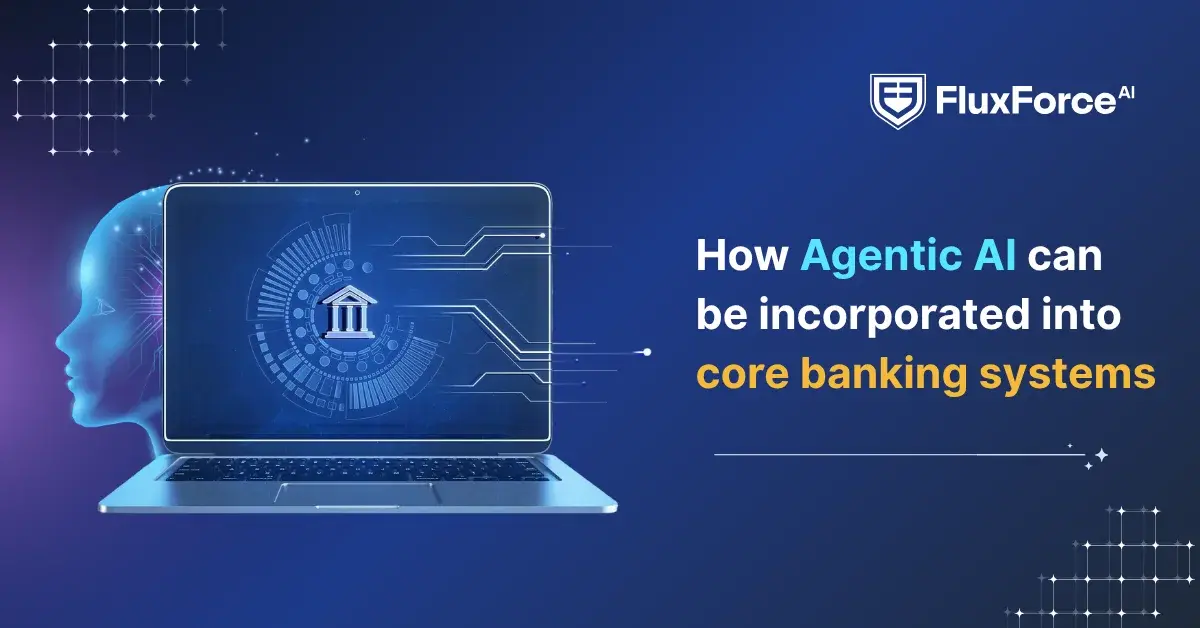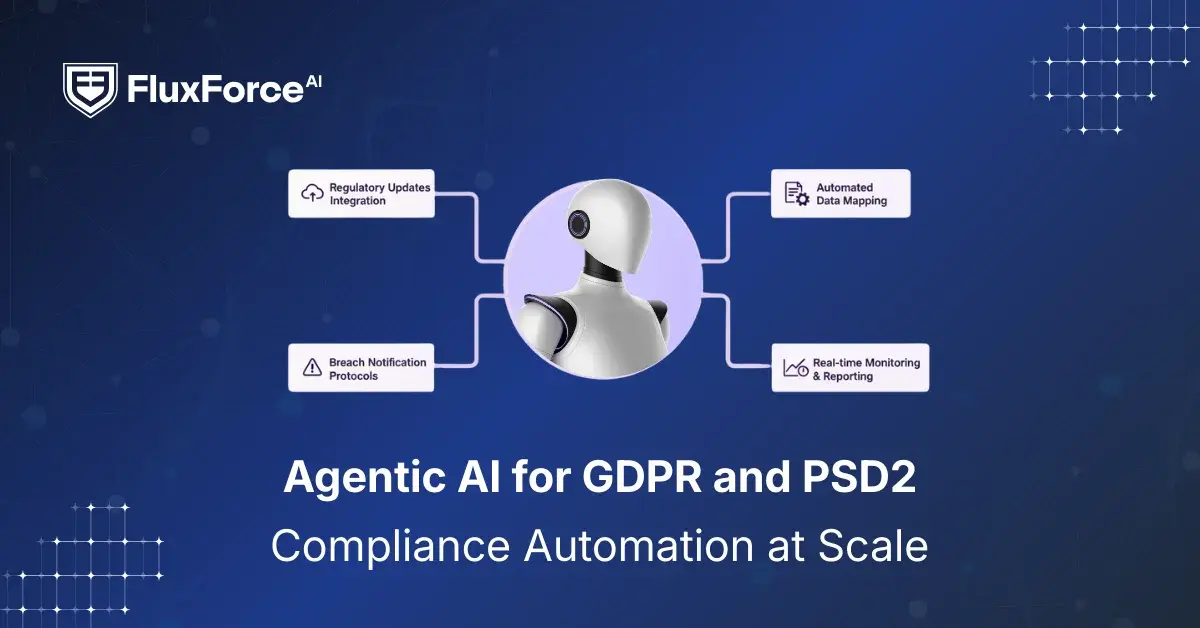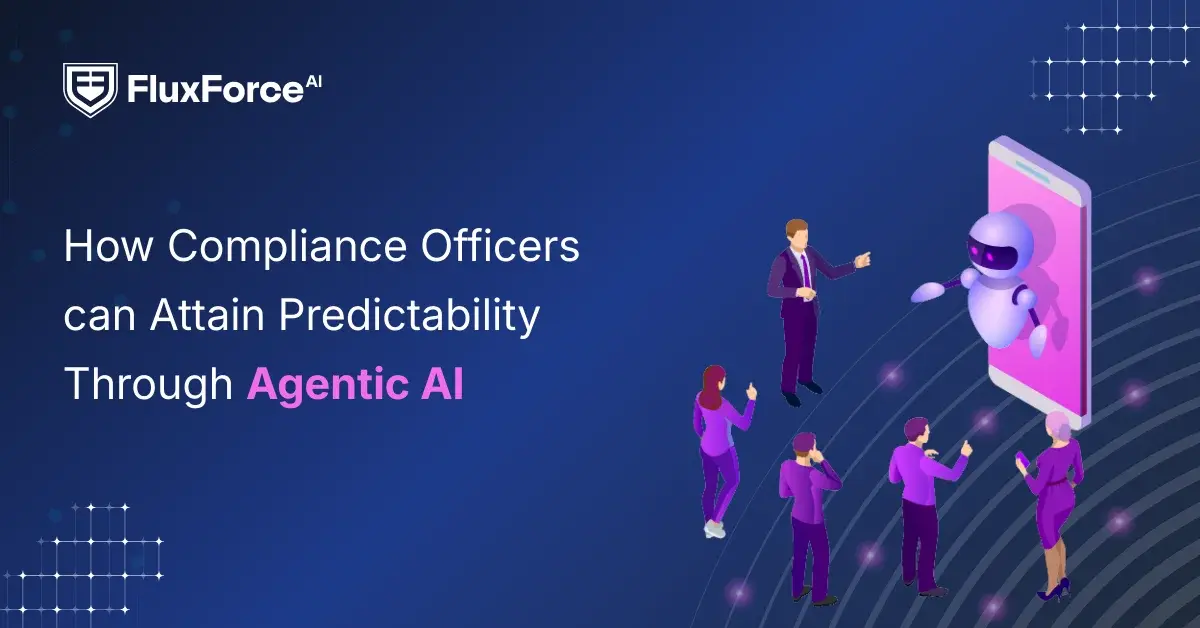Listen To Our Podcast 🎧

Introduction
If you’re running a mid-sized or community bank, you know the tension: your core systems are reliable, but painfully rigid. Every day, teams wrestle with manual approvals, fragmented data, and compliance checks that slow operations. The board is asking for smarter, faster decision-making, but rebuilding the entire core isn’t realistic.
That’s why agentic AI and AI banking solutions are suddenly on every banking executive’s radar. Unlike traditional automation, these autonomous agents can interact with multiple legacy systems, make decisions, and execute tasks all while keeping crucial compliance intact.
The challenge is real:
- Legacy systems weren’t built for AI: Many rely on batch processes, siloed databases, and manual workflows, which limits the application of AI in banking.
- Compliance and regulatory oversight complicate adoption: Every AI action must be auditable to meet crucial compliance standards, especially for community bank digital transformation initiatives.
- Integration gaps block cloud-native AI services: APIs are often missing or inconsistent, slowing the adoption of artificial intelligence applications in banking.
But here’s the opportunity: banks that embed AI and banking agents gain a practical path to modernize without replacing their core. For example:
- RMA Financial uses AI agents to flag unusual transactions and draft reports, cutting manual compliance work by 40%.
- Evolve Mortgage Services automates document verification and updates loan systems, speeding approvals while staying compliant.
- Community banks deploy AI-powered fraud prevention for community banks, creating automated, auditable workflows for daily operations.
According to Deloitte, 80% of banks plan to integrate autonomous AI agents into core operations by 2026, with projected cost reductions of up to 30% in manual processing and compliance tasks. These figures show that benefits of AI in banking aren’t just theoretical—they’re measurable.
The point for banking leaders: embedding artificial intelligence for banks isn’t about replacing your core. It’s about incremental modernization that reduces risk, accelerates operations, and delivers measurable ROI.
Now it’s time to get practical. Let’s see how to prepare banking legacy systems for safe, high-impact agentic AI integration.

Shaping the Future of AI in Finance
Fluxforce research uncovers how banks and enterprises are adapting to fraud, compliance, and data challenges in 2025.
Step 1 — Audit and Map Core System Dependencies
Before you can embed agentic AI into your legacy banking systems, you need a clear view of your current environment. Many failures in AI projects start here—banks underestimate how interconnected and fragile their systems are.

Here’s how to approach it like a modern banking leader:
1. Identify Critical Systems
Start by mapping all core banking functions where AI can have high impact:
- Loan origination and Evolve Mortgage Services pipelines
- KYC and onboarding workflows (smart AI for customer onboarding in community banks)
- Fraud detection and AI-powered fraud prevention for community banks
- CRM and customer service systems (AI customer service agents for banking)
2. Map System Dependencies and Bottlenecks
Document how systems interact, including:
- APIs and interfaces for connecting to other internal or external systems (AI banking solutions)
- Manual data exchanges that slow operations
- Compliance checkpoints that require human approvals (reducing compliance costs with AI in regional banks)
Tools like process mining or workflow analytics can highlight decision bottlenecks, allowing you to see where intelligent banking agents can safely step in.
3. Categorize by Risk and Opportunity
Not all systems are ready for full autonomy. Classify them:
- High-risk, high-value: Fraud detection, regulatory reporting (cyber risk reporting for community banks)
- Medium-risk, medium-value: Loan document processing, customer onboarding
- Low-risk, experimental: Internal dashboards, reporting automation (AI banking alerts)
This ensures that your cost-efficient AI automation in banking operations targets the right areas first, reducing risk and maximizing ROI.
By the end of this audit, your bank will have:
- A full inventory of critical systems and dependencies
- Identified bottlenecks where AI can autonomously act
- A prioritized roadmap for pilot deployments and scaling
Step 2 — Create a Secure Data Interoperability Layer
Once you’ve mapped your core system dependencies, the next challenge is connecting agentic AI to legacy systems without disrupting operations or violating compliance. Legacy core systems weren’t designed for cloud-native AI. The solution? A secure, modular interoperability layer.

1. Build a Middleware or Data Orchestration Layer
Instead of replacing your core, wrap it. This layer acts as a bridge between your AI banking solutions and existing databases:
- Use APIs or RPA + agentic AI orchestration to simulate human interactions in systems without native APIs
- Ensure data flows are monitored, logged, and auditable for crucial compliance
This approach enables AI applications in banking to operate safely, even in complex legacy environments.
2. Apply Data Security and Compliance MeasuresFinancial data is sensitive. Ensure every connection adheres to regulatory standards:
- Data masking and encryption for sensitive customer information
- Role-based access controls to limit who can see or interact with AI-processed data
- Audit logging to track every AI action for regulators
- This allows banks to leverage secure AI systems for regional banks without exposing sensitive information.
3. Design the interoperability layer so AI agents can be added or removed as needed:
- Start with high-value, low-risk workflows like AI banking alerts or automated reporting
- Expand to more sensitive operations such as cyber risk reporting for community banks or loan approvals
By keeping integration modular, you avoid disrupting existing services while enabling cost-efficient AI automation in banking operations.
With a secure data interoperability layer, your bank can:
- Connect intelligent banking agents to multiple legacy systems
- Ensure full compliance with regulations
- Prepare for pilot deployments with measurable ROI
Step 3 — Deploy Agentic AI in Controlled Use Cases & Implement Governance
Now that your systems are mapped and a secure data interoperability layer is in place, it’s time to let AI start doing work. But the key for mid-sized and community banks is controlled deployment—start small, demonstrate ROI, and scale responsibly.

1. Identify High-Impact Pilot Use Cases
Select areas where agentic AI can generate measurable benefits quickly:
- RMA Financial compliance: AI agents monitor transactions, flag anomalies, and draft reports for human review. This reduces manual effort and ensures crucial compliance.
- Evolve Mortgage Services: Agents extract, verify, and update documents in loan systems, speeding approvals while maintaining auditability.
- Cyber risk reporting for community banks: AI scans logs and produces real-time dashboards, enabling proactive risk management.
2. Establish Governance and Oversight
AI is powerful but it’s useless if regulators or internal teams don’t trust it. A governance framework should include:
- Model transparency: Every AI decision, from fraud detection to loan approval, must be explainable.
- Data access control: Restrict who can view or modify AI-driven outputs, aligning with secure AI systems for regional banks.
- Audit tracking: Maintain logs for every AI action to satisfy compliance and reducing compliance costs with AI in regional banks.
Involving compliance and legal teams early ensures trust and prevents adoption roadblocks.
3. Measure ROI from Pilots
Track metrics such as:
- Reduction in manual processing hours
- Accuracy improvement in compliance checks
- Faster turnaround times for AI banking alerts and document workflows
Early wins provide evidence to justify further investment and build confidence in cost-efficient AI automation in banking operations.
By the end of this step, your bank will have:
- AI operating safely in critical workflows
- Governance and compliance embedded in all operations
Step 4 — Scale Agentic AI Across Core Operations & Final Thoughts
Start by connecting all AI agents through a central orchestration layer, enabling them to collaborate across workflows—fraud triggers compliance checks, loan processing updates dashboards, and customer service queries are handled in real time. This lets intelligent banking agents operate autonomously while maintaining crucial compliance.
Expand gradually: incorporate AI banking solutions, conversational AI for banks, and smart AI for customer onboarding in community banks into workflows with clear ROI. Integrate real-time analytics dashboards to track AI performance, operational efficiency, and regulatory compliance.
Governance remains critical. Ensure secure AI systems for regional banks, transparency, and audit logging are applied consistently, so compliance and IT teams can trust AI decision-making.
Outcome:
- Autonomous operations across multiple systems
- Faster decisions, reduced manual effort
- Enhanced customer experience through AI-driven services
- Sustainable cost reductions without replacing legacy systems
Conclusion
Adding agentic AI to your core banking systems is not about replacing what already works. It is about making your existing systems more efficient than ever before. For mid-sized and community banks, it means handling routine tasks automatically, improving compliance, and making better decisions without extra risk.
The key is to introduce AI carefully and gradually. When done right, autonomous AI agents can reduce manual work, speed up customer processes, and help banks manage risk more effectively.
Banks that adopt AI banking solutions in this way can save costs, improve operations, and respond faster to customer needs. Agentic AI gives a practical way to update core systems safely and gain measurable results.
In short, agentic AI helps banks work smarter, serve customers better, and prepare their systems for the future.






Share this article